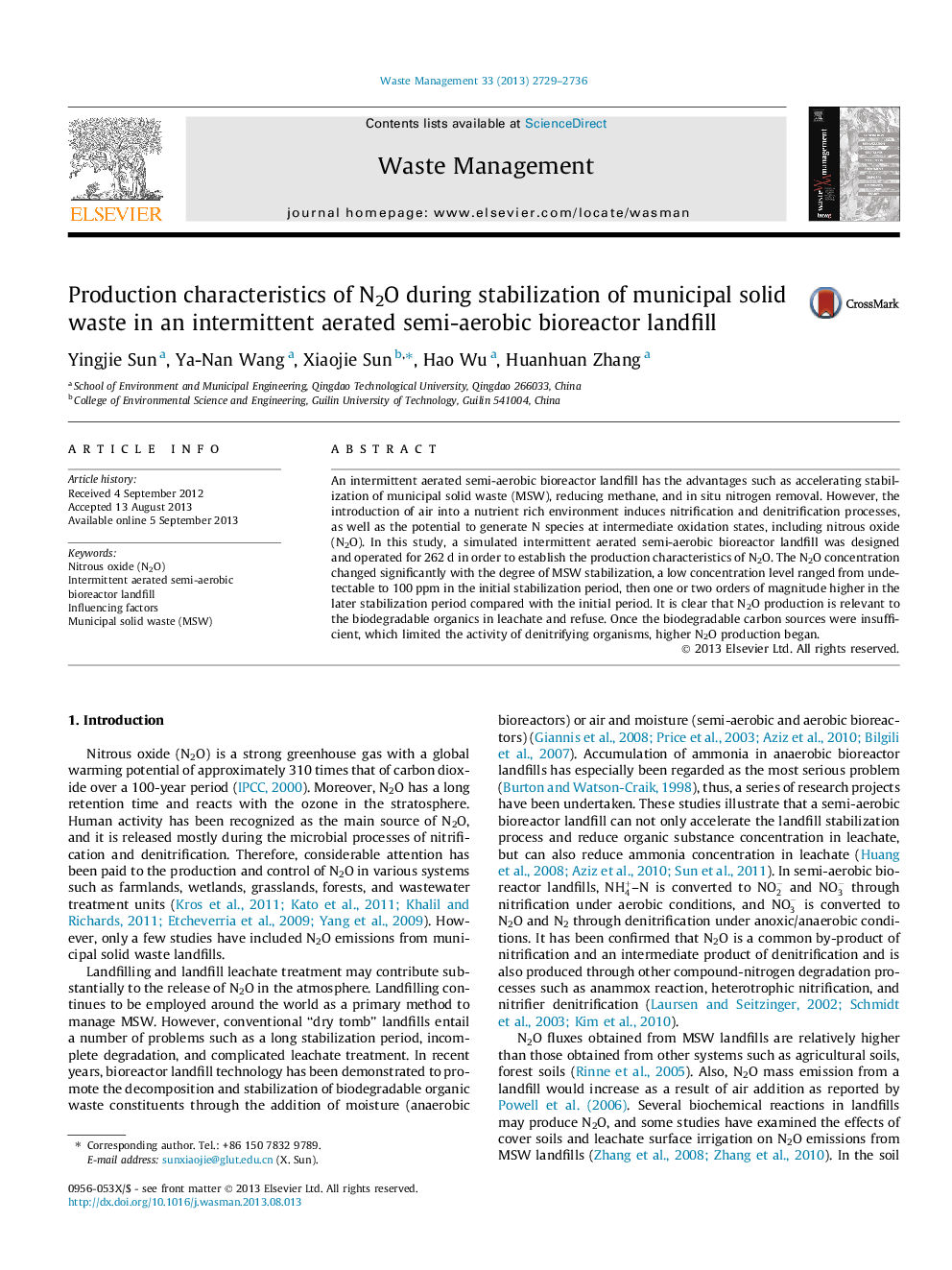| Article ID | Journal | Published Year | Pages | File Type |
|---|---|---|---|---|
| 6355265 | Waste Management | 2013 | 8 Pages |
â¢An intermittent aerated semi-aerobic bioreactor landfill is an important source of N2O.â¢The concentration of N2O changed significantly with the degree of MSW stabilization.â¢It is clear that N2O production is relevant to the biodegradable organics in leachate and refuse.
An intermittent aerated semi-aerobic bioreactor landfill has the advantages such as accelerating stabilization of municipal solid waste (MSW), reducing methane, and in situ nitrogen removal. However, the introduction of air into a nutrient rich environment induces nitrification and denitrification processes, as well as the potential to generate N species at intermediate oxidation states, including nitrous oxide (N2O). In this study, a simulated intermittent aerated semi-aerobic bioreactor landfill was designed and operated for 262Â d in order to establish the production characteristics of N2O. The N2O concentration changed significantly with the degree of MSW stabilization, a low concentration level ranged from undetectable to 100Â ppm in the initial stabilization period, then one or two orders of magnitude higher in the later stabilization period compared with the initial period. It is clear that N2O production is relevant to the biodegradable organics in leachate and refuse. Once the biodegradable carbon sources were insufficient, which limited the activity of denitrifying organisms, higher N2O production began.
